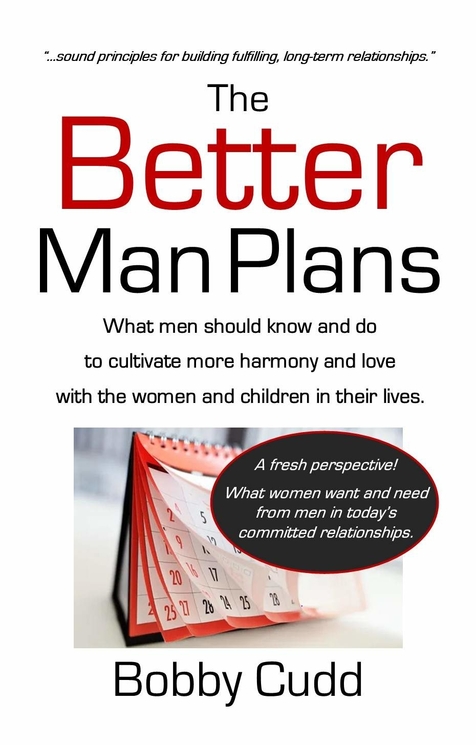
Author Bobby Cudd delivers a comprehensive, accessible, and entertaining guide for those looking to improve how they show up for their relationships in The Better Man Plans: What men should know and do to cultivate more harmony and love with the women and children in their lives.
From examining traditional relationship conflicts and the internal failings of masculinity, to prescribing innovative activities and new approaches for connection, communication, and ambition, this book takes varied angles on the same fundamental issues. Perhaps most notably, the author touches on aspects of relationship that are often overlooked: romantic apathy, invisibly existing in partnership, underlying shameful stressors, and deep-seated programming from one’s parental bonds, just to name a few.
“The Magic” is a powerful section, one that stands out as particularly well-planned and executed, with measurable goals and daily behavioral patterns to address for readers. “The Results” and “Riches” sections, however, veer into overly informal language and a blend of personal opinion and broad generalizations. The narrative voice is unmistakably aimed at men, but it doesn’t always come across as academic, impartial, or even respectful towards the nuances and complexity of women. Sweeping generalizations are made throughout the book – about both men and women – often backed with only anecdotal evidence. There are some references to studies and accepted scientific/social opinions, but references to “my research” can undercut the seriousness of the book’s claims.
The informality of the language certainly makes the book easy to read, but for those seeking to improve the performance of their relationship roles and their overall behavior as a man, this guide isn’t always effective. The author reinforces traditional gender roles, whether he intends to or not, while simultaneously trying to push men to be “better” than the toxic masculinity and distanced intimacy of the past. As the book progresses from general ideas and “The Concept” into more actionable items and plans, the tone changes, becoming less eyebrow-raising, and more encouraging.
The intention of this book is clear, as is the sincere desire of the author to affect positive change, but generally the execution and technical aspects fall short. Most of the quotes scattered throughout the chapters are appropriate and interesting, but some feel only peripherally relevant to the content being discussed. While the chapters are well-structured and intuitively ordered, the narration is redundant in certain sections, and the sentence structures are unusual, either choppy, passive, or circuitous, requiring readers to go back and decipher to fully understand the meaning.
These criticisms aside, the content is readily accessible for any reader at any stage of relationship, even those without partners who may want to prepare for their next important connection. The examples provided about relationship pitfalls do illustrate common conflicts that couples experience, and for readers seeking a starting point for self-improvement, this book will be certainly useful. The overall analysis of cognition and behavioral patterns can feel somewhat simplistic, but the core lessons of this book are critical, and the author has a confident, yet welcoming voice that encourages engagement and provokes introspection.
Book Links
STAR RATING
Design
Content
Editing
Get an Editorial Review | Get Amazon Sales & Reviews | Get Edited | Publish Your Book | Enter the SPR Book Awards | Other Marketing Services






















Leave A Comment